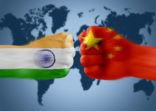Asian equities have lagged their global peers so far this year, largely the due to the outperformance of the S&P 500. The MSCI Asia index rose 10.52% last year compared with a 19.51% jump in the MSCI World index.
Still, there have been some bright sparks in the region, notably in India, which remains a favourite among asset allocators due to the country’s favourable demographics, pro-business reforms and political stability.
However, a more muted performance in Japan this year compared with last year after the sell-off in August has weighed on returns in the broader index.
Similarly, China continues to be in a state of flux as a breakout rally in September helped Asia ex Japan funds outpace global market indices for the first time in several years. Although, investors continue to take a wait and see approach regarding the country’s stimulus measures.
Against this background, Darius McDermott, managing director at Chelsea Financial Services, chose the Invesco Asian fund and the JOHCM Asia ex‐Japan fund for this week’s head to head.
| Invesco | JOHCM | |
| Size | $2.97bn | $22.4m |
| Inception | 2012 | 2011 |
| Managers | William Lam | Samir Mehta, Cho Yu Kooi |
| Three-year cumulative return | 8.33% | -14.58% |
| Three-year annualised return | 2.81% | -4.31% |
| Three-year annualised alpha | 6.23 | -1.78 |
| Three-year annualised volatility | 17.13 | 16.69 |
| Three-year information ratio | 1.06 | -0.27 |
| FE Crown fund rating | **** | ** |
| OCF (retail share class) | 0.9% | 1.63% |
Investment approach
The Invesco fund has a strong value-driven approach, which takes the form of two steps. The first step is to estimate the expected growth in earnings, based on historic growth rates, market trends, a company’s competitive advantage and the quality of their management.
This is then combined with the team’s view of a fair valuation based on the strength of the company’s balance sheet, cash flow and future growth.
This process narrows down the list of stocks to around 50-70 along with a shortlist of 30 reserve candidates that can be added should valuations allow.
This process explains the fund’s focus on untapped areas of the market such as Korea, where they see value in the country’s corporate governance reforms. They also have a modest overweight to China and Hong Kong, while they are underweight Australia, India and Taiwan.
Meanwhile, the JOHCM fund has a three-pronged approach, starting with targeting companies with a rising return on capital employed, EBIT margins and free cash flow.
The next stage is to look for structure, which comprises management teams, agility and adaptability, and competitiveness.
The final stage comprises disruption, restructuring, market penetration and strong growth.
The final portfolio comprises two buckets, the majority of which are in the long-term, sustainable growth bucket, while a minority comprise quality cyclicals.
The difference in style is best illustrated by the positions in India, where the JOHCM fund has 27.1% exposure compared with 7.8% for the Invesco fund. The JOHCM fund is also higher conviction with only 34 names compared with 58 for Invesco.
Sector allocation:
| Invesco | JOHCM | ||
| Financials | 25.6% | Information Technology | 28% |
| Information Technology | 20.1% | Financials | 17.8% |
| Communication Services | 12.4% | Consumer Discretionary | 17.6% |
| Industrials | 11% | Industrials | 10.3% |
| Consumer Discretionary | 10.5% | Communication Services | 9.6% |
| Materials | 7.4% | Healthcare | 8.1% |
| Consumer Staples | 5.1% | Energy | 4.5% |
| Energy | 2.3% | Consumer Staples | 3.4% |
| Real Estate | 1.8% | Materials | 0.5% |
| Utilities | 1.2% | Cash | 0.2% |
Top five holdings:
| Invesco | JOHCM | ||
| Taiwan Semiconductor Manufacturing Co | 8.91% | PB Fintech | 7% |
| Samsung Electronics Co | 5.75% | Taiwan Semiconductor Manufacturing Co | 7% |
| Tencent Holdings | 5.17% | Haidilao International Holding | 5.3% |
| HDFC Bank | 4.63% | Tencent Music Entertainment | 5.2% |
| Kasikornbank | 3.96% | Full Truck Alliance | 5.1% |
Performance
While both funds have outperformed their peers over the past five years, the growthier nature of the JOHCM fund is seen in its strong outperformance in 2020, whereas the Invesco fund has been more dominant when value has been in vogue such as in 2022.
McDermott notes that both funds have ways of smoothing returns in the portfolio. The JOHCM fund has its quality cyclical bucket, while the Invesco fund does not completely ignore growth companies.
McDermott also notes that while the best performance for Invesco has come when value stocks have been in vogue, this is not the sole reason for the fund’s outperformance as it tends to do well in a strong economic environment in Asia.

Manager review
Lam was originally co-manager of the Invesco fund since 2015 before becoming sole head in 2017.
He is a qualified accountant having worked at Deloitte and moved into investment management in 2001, taking on a role with Orbis Investment Management in 2001.
He joined Invesco in 2006 and was appointed co-head of emerging markets in 2018.
Meanwhile, the JOHCM fund is supported by a 10-strong group of portfolio managers and analysts across their Asia ex-Japan team. They are supported by a data science team.
Samir Mehta managed the fund since its launch. He joined JOHCM in 2011 and has 34 years of industry experience. Meanwhile, Cho-Yu Kooi was previously a portfolio manager at Lloyd George.
Conclusion
McDermott likes both funds, noting that both have a good long-term track record.
McDermott notes that the JOHCM fund is a great all-rounder as although the majority of the portfolio is held in the quality, long-term sustainable growth bucket, it is complemented by the quality cyclicals overlay.
Meanwhile, McDermott notes that the Invesco fund stands out because of Lam’s pragmatic and flexible approach.
“It can lead to exposure where other managers fear to tread, with a value focus that has been unpopular with investors for chunks of the past decade,” said McDermott.

















